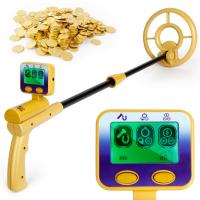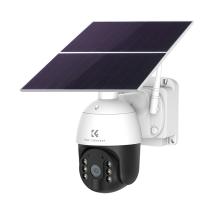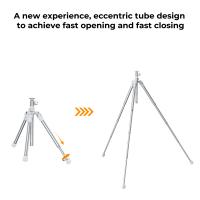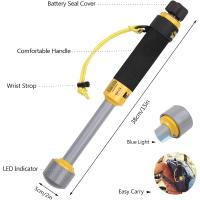How To Make A Compound Microscope ?
Making a compound microscope requires a significant amount of technical expertise and specialized equipment. The process involves assembling multiple lenses and mirrors in a precise manner to create a magnified image of a specimen. The basic components of a compound microscope include an eyepiece, objective lenses, a stage, and a light source.
To make a compound microscope, one would need to start by selecting the appropriate lenses and mirrors and then assembling them in the correct order. The lenses and mirrors must be carefully aligned to ensure that the image is clear and magnified. The stage must also be designed to hold the specimen securely and allow for precise movement.
The process of making a compound microscope is complex and requires a significant amount of time and expertise. It is not a project that can be undertaken by someone without a background in optics and engineering. For those interested in microscopy, it is recommended to purchase a pre-made microscope or seek out a professional to assist with the construction of a custom microscope.
1、 Materials needed

How to make a compound microscope:
A compound microscope is a powerful tool used to magnify small objects and organisms. Making a compound microscope requires some technical skills and knowledge of optics. Here are the steps to make a compound microscope:
Materials needed:
1. Two convex lenses (one with a shorter focal length and one with a longer focal length)
2. A metal or wooden base
3. A metal or wooden stand
4. A light source (such as a lamp or LED)
5. A mirror or prism to reflect light onto the specimen
6. A stage to hold the specimen
7. A set of eyepieces with different magnifications
8. A set of objective lenses with different magnifications
9. A focusing mechanism (such as a rack and pinion or a fine adjustment knob)
10. Glass slides and coverslips to hold the specimen
The latest point of view on making a compound microscope is that it can be done using 3D printing technology. With the help of a 3D printer, one can create the base, stand, and stage of the microscope. This makes the process more accessible and affordable for hobbyists and students.
To assemble the microscope, start by attaching the shorter focal length lens to the base. Then, attach the longer focal length lens to the stand. Place the mirror or prism on the stand to reflect light onto the specimen. Attach the stage to the base and place the specimen on it. Insert the objective lens into the stand and adjust the focus using the focusing mechanism. Finally, insert the eyepiece into the stand and adjust the magnification as needed.
In conclusion, making a compound microscope requires some technical skills and knowledge of optics. With the latest advancements in 3D printing technology, it has become more accessible and affordable for hobbyists and students.
2、 Assembly of the microscope body

Assembly of the microscope body is a crucial step in making a compound microscope. To begin with, gather all the necessary parts, including the base, arm, stage, focus knobs, eyepiece, and objective lenses. Start by attaching the arm to the base and securing it with screws. Next, attach the stage to the arm and ensure it is level.
Once the stage is in place, attach the focus knobs to the arm and ensure they move smoothly. Then, attach the eyepiece to the top of the arm and secure it with screws. Finally, attach the objective lenses to the nosepiece and ensure they are aligned correctly.
It is important to note that the assembly process may vary depending on the type of microscope being made. For instance, some microscopes may require additional parts such as a condenser or diaphragm. Therefore, it is essential to follow the manufacturer's instructions carefully.
In recent years, advancements in technology have led to the development of digital microscopes that use cameras and software to capture and analyze images. These microscopes offer higher magnification and resolution than traditional microscopes and are becoming increasingly popular in research and medical fields.
In conclusion, the assembly of the microscope body is a critical step in making a compound microscope. It is essential to follow the manufacturer's instructions carefully and ensure all parts are aligned correctly. With the latest advancements in technology, digital microscopes are becoming more prevalent and offer higher magnification and resolution for various applications.
3、 Making the lenses

Making a compound microscope can be a challenging but rewarding project for those interested in optics and microscopy. One of the most critical components of a compound microscope is the lenses. Here are the steps to make the lenses for a compound microscope:
1. Choose the type of lens: There are two types of lenses used in a compound microscope: the objective lens and the eyepiece lens. The objective lens is the lens closest to the specimen, while the eyepiece lens is the lens closest to the eye. Both lenses can be made using glass or plastic.
2. Determine the focal length: The focal length is the distance between the lens and the point where the light rays converge. The focal length of the objective lens should be shorter than that of the eyepiece lens.
3. Grind the lens: To grind the lens, you will need a lens blank, which can be purchased from a scientific supply store. The lens blank should be made of the same material as the lens you are making. Use a grinding tool, such as a diamond tool or a sandpaper disc, to shape the lens to the desired curvature.
4. Polish the lens: Once the lens is shaped, it needs to be polished to remove any scratches or imperfections. Use a polishing tool, such as a polishing pad or a polishing compound, to achieve a smooth surface.
5. Coating the lens: To improve the lens's performance, you can add a coating to the lens. A common coating is an anti-reflective coating, which reduces the amount of light reflected off the lens.
In recent years, advancements in technology have made it possible to create lenses using 3D printing. This method allows for more precise and customizable lenses, but it requires specialized equipment and expertise. Regardless of the method used, making lenses for a compound microscope requires patience, skill, and attention to detail.
4、 Mounting the lenses

To make a compound microscope, you will need to follow a few steps. The first step is to gather all the necessary materials, including two lenses, a tube, a stand, and a light source. Once you have all the materials, you can begin the process of assembling the microscope.
The first step in assembling the microscope is to mount the lenses. The lenses should be mounted in a way that allows them to be adjusted for focus. This can be done by placing the lenses in a tube and securing them in place with a clamp. The tube should be long enough to allow the lenses to be adjusted for focus.
Once the lenses are mounted, you can begin to assemble the rest of the microscope. The tube should be attached to a stand that allows it to be adjusted for height. The stand should also have a base that provides stability.
The light source should be positioned so that it shines through the lenses and illuminates the specimen being viewed. The light source can be a lamp or a mirror that reflects light onto the specimen.
Finally, the microscope should be tested to ensure that it is working properly. This can be done by placing a specimen on the stage and adjusting the lenses for focus. The specimen should be clear and in focus when viewed through the microscope.
In recent years, there have been advancements in microscope technology that have led to the development of digital microscopes. These microscopes use digital cameras to capture images of specimens and display them on a computer screen. Digital microscopes are becoming increasingly popular in research and education settings due to their ease of use and ability to capture high-quality images.








































There are no comments for this blog.